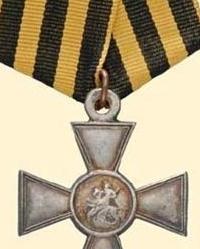During the Great Patriotic War, the leadership of the USSR remembered such a half-forgotten phenomenon as the glory of Russian weapons. If in the period preceding the German attack, the ideological training of the Red Army was carried out in the direction of assisting the world proletariat, then after it there was a change of course. Patriotic propaganda reached its climax by 1943, when the insignia — epaulettes, stripes, officer oval cockades and other symbols of the Russian tsarist army — were introduced, but essentially returned. Government awards did not go unnoticed.

The history of the St. George ribbon begins in 1769. In the Russian Empire, soldiers and officers who particularly distinguished themselves in the battlefield were marked with the Order of St. George; he had four degrees. Like any reward, the cross of St. George hung on a ribbon, two-tone, black and orange. Fire and smoke, or the imperial standard, are the main ideas of this coloristic solution. The combination of these colors has become a symbol of military prowess. After the October Revolution, the wearing of any royal awards was prohibited, but in 1943 I.V. Stalin decided to introduce a soldier’s order similar to the St. George Cross. It also had to be made of silver and have four degrees. The colors of the tape are also borrowed from the original source.
Inspired by the glory of past generations of the Russian army, the history of the St. George ribbon found its continuation in the guards symbolism of the Soviet Army. Military units and ships awarded this title have received badges since 1941, and sailors also have orange-black moire plates.
The history of the St. George ribbon was continued in 1945. At the Victory Parade, Soviet generals and marshals were girded with smart orange-black sashes, which clearly hinted at the continuity of Russian military traditions. The times of proletarian aesthetics are over, and, apparently, forever. The Soviet generals with gold epaulettes and imperial-colored belts no longer resembled the Chapaevs and Trotsky, rather, they resembled the royal supreme headquarters.

But the story of the St. George ribbon did not end there. The most massive medal, which was awarded to Soviet soldiers immediately after the war, “For Victory over Germany”, already had a certain imperial-patriotic meaning in its name. Victoria was noted over the country, and not over Hitlerism or Nazism, which was characteristic of the Russian rather than the Soviet ideological worldview. Is it worth mentioning that the ribbon of this medal was of the same imperial color? On its obverse the words “Our cause is right, we won” are stamped and the author’s profile is I.V. Stalin.
Nowadays, the value of the St. George ribbon continues to be important, and this is good. A people who do not remember the glories of their ancestors is historically doomed. Our Motherland is multinational, and the fact that for the soldiers of the Russian army who profess Islam, special orders were produced for which the two-headed eagle was depicted instead of St. George, as an example of caring for the culture of its peoples .
The history of the St. George ribbon continues to this day. Since 2005, it has firmly taken the main place among the symbols of the Great Victory and emphasizes the involvement in it of all the peoples inhabiting the Soviet Union. This tape has no boundaries, it connects the hearts.